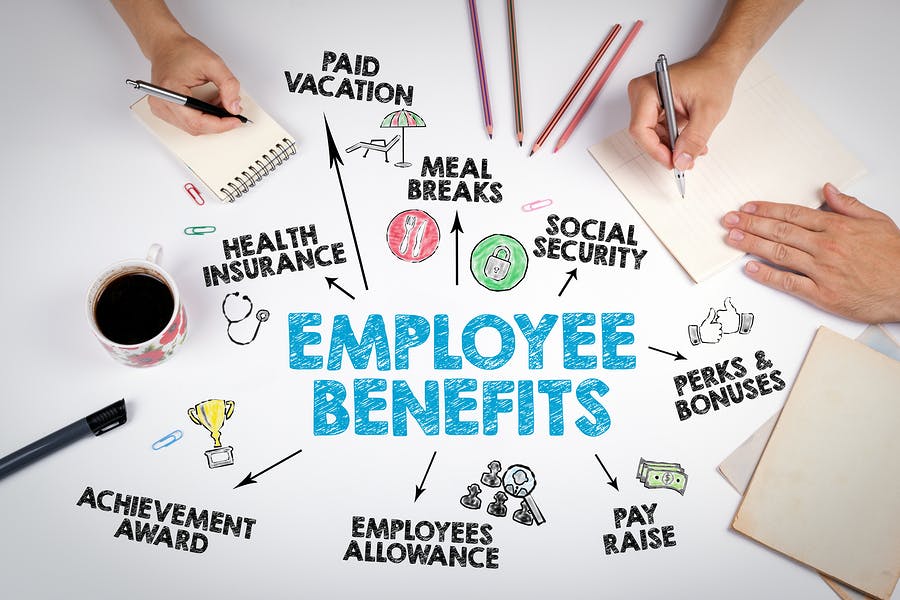So you’ve survived open enrollment. Now that you’re finished fielding 10,000 questions about health care plans, you can start looking ahead to 2018.
New Year. New Benefits … amirite?!
The stretch between open enrollment and the holidays is a fine time for HR leaders to focus on the year ahead. And, if you’re not thinking about the non-healthcare portions of your employee benefits program for 2018, perhaps you should be. Here are nine reasons why.
1. Recruiting and retention
More than 3 million Americans voluntarily quit their jobs each month throughout 2017, according to the Bureau of Labor Statistics, including several months when the quit rate was the highest since it’s been since before the Great Recession. This signals that job market confidence is high and American workers are willing to leave in search of greener pastures. At the same time, however, employers continue to report finding quality candidates is their top challenge. Put it all together and you’ve got a job market where employers must be taking their recruiting and retention efforts seriously. And, given that wage growth has been sluggish, smart employers are loading up on benefits to win the talent wars.
2. Rising health care costs
Health care costs have been on the rise … and it’s hitting employers and employees alike. Premiums for employer-provided plans are climbing fast and deductibles are ticking up, too. With companies loathe to shift any more of the financial burden of health care onto employees, they’re seeking ways to manage costs and find efficiencies. One approach has been promoting good health through wellness benefits and incentives.
3. Wellness
In addition to soaring health care costs, demand for wellness – or wellbeing – benefits is on the rise. As many as 40% of HR leaders planned to invest in corporate wellness benefits this year, a trend that coincides with the rise of disruptive wellness apps and tech products. This trend should only continue to grow. There is a clear return on investment just by reducing stress, which alone costs businesses more than $300 billion annually.
4. Financial wellness
As the scope of wellness continues to expand into a more holistic approach to wellbeing, financial planning assistance and relief from child care costs or student loans are becoming increasingly popular among – not to mention hugely impactful for – employees. When a reported one in four workers suffers from serious financial distress, it makes sense that companies would want to lighten the mental load for their employees.
5. Policy uncertainty
Washington wrestling with policy decisions has left considerable uncertainty around issues like health care, paid leave, the costs of family care and more. Meanwhile, a growing number of workers are looking for their employers to take a stand on political and social issues that matter to them. In times of uncertainty, companies can send a strong message and engender loyalty by supporting their workforce with benefits that matter to them.
6. Demographic pressures
Millennials command much of the discussion, but today’s workforce is multigenerational. From Boomers nearing retirement or choosing to stay on, down to the upstart Gen Zers who are just starting out their careers, multigenerational workforces have a diverse set of needs and interests as far as employer-provided benefits are concerned. Millennials are big on having flexibility, backup child care, and professional development, while Gen X employees are invested in building their retirement nest eggs. Many Gen Xers and Boomers are also in what we call the “Sandwich Generation, “which means they’re caring for children and aging loved ones as well. Benefits that help with senior care planning are a big concern for these populations.
7. Consumerization of the workplace
On-demand expectations have arrived at the office. With employees increasingly expecting to have the kind of options and immediacy in the office that they’re accustomed to outside of it, companies are increasingly offering onsite access to amenities like car washes, manicures and in-office massage.
8. Productivity boosters
It’s not news that work and life are blending together to where working from home is old hat and homing from work is increasingly common. Employers are getting in on the game and acting as facilitators and conduits to on-demand services. By providing solutions like backup child care, which reduce the friction in the lives of employees, companies can improve productivity and employee engagement.
9. Because everyone else is doing it
This goes back to the first point – about talent acquisition – but you can bet that your employees and prospective hires are comparing your benefits to other companies as they shop around for employment opportunities. So you better have your eye out, as well. Talk with your colleagues and brokers to see how your benefits stack up against the competition for 2018.
This article originally appeared on the Care@Work blog.
